Designing the best environment for oviposition
We had learned in previous years how important it was to shield the turtles from being frightened by movements around them. We used to suspend them over a wet towel in a closed closet to achieve this goal. This worked fine for painted turtles (Chrysemys picta picta) and box turtles but such a procedure was time consuming and some species became agitated if suspended.
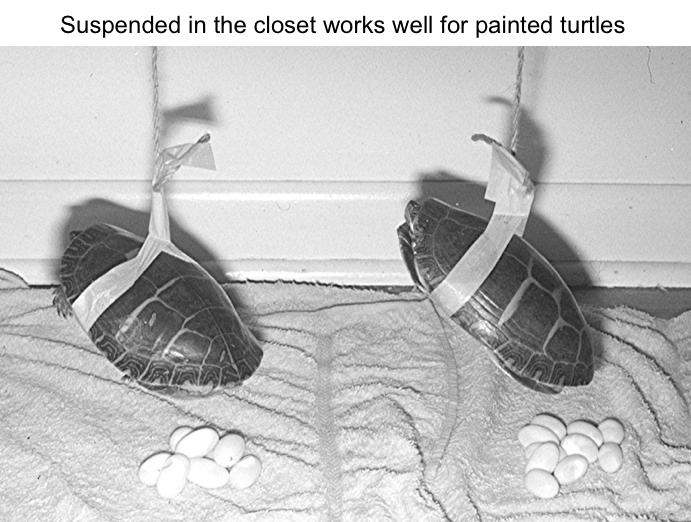
Placing them in deep water also worked but it required frequent observation to remove the eggs and it was also time consuming. We eventually decided on using a wide spaced grid that the eggs could fall through onto a moist surface below. Constructing the grid took about twenty minutes but it could be reused hundreds of times and was safe for the turtles and the eggs.
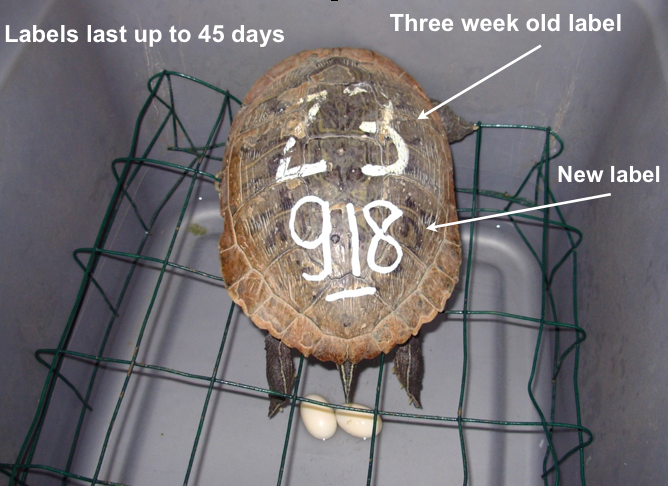
We wondered if noise affected the laying process. To test this we put the plastic tubs outside the lab in an alleyway that diesel powered 4×4 vehicles drove through about every ten minutes. To our surprise the noise had no effect at all.
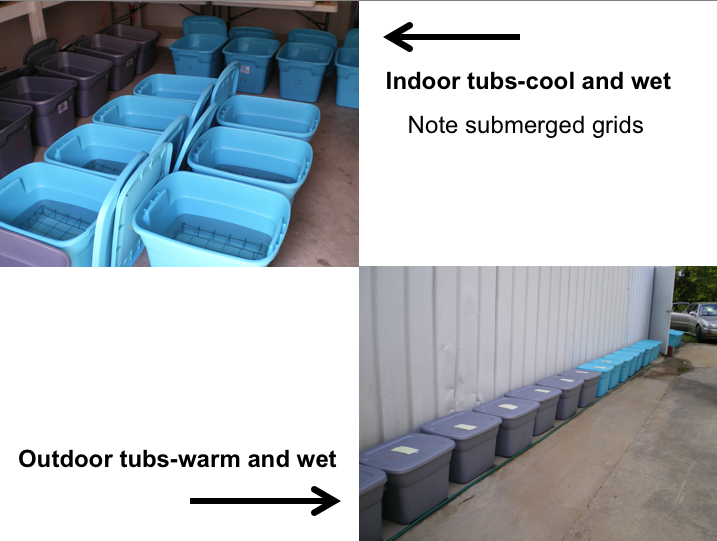
We did this the first time using oxytocin alone. The results are shown in the chart below.
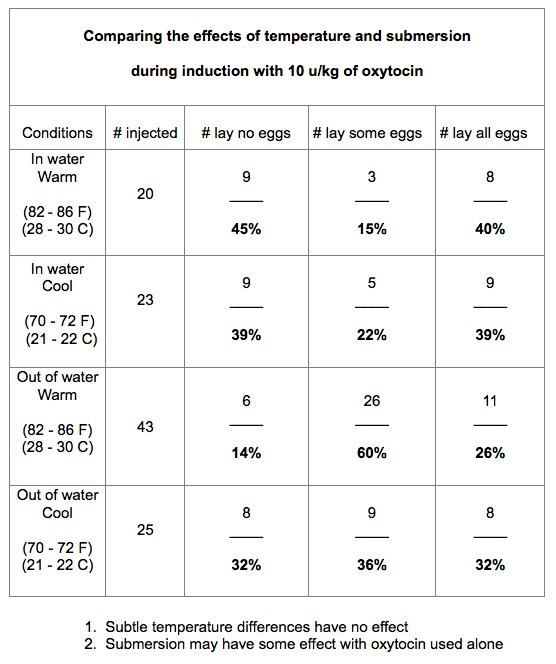
Years later we repeated the experiment using a mix of oxytocin and prostaglandin F2-alpha (Lutalyse) as shown in the chart below. The oxytocin alone was much less effective than when it was combined with Lutalyse but the noise did not influence the outcomes.
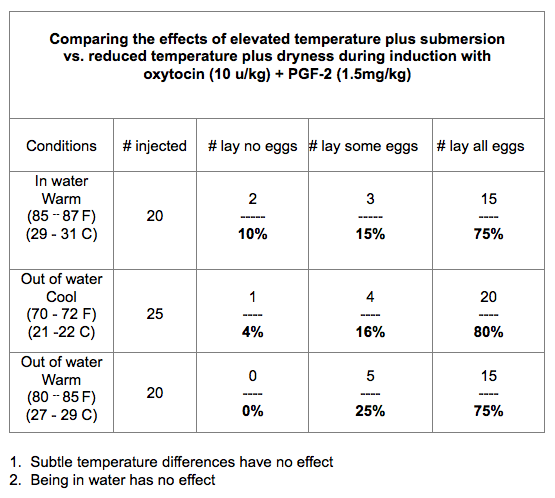
In April and early May the alleyway was much warmer than the lab so we tested to see if the temperature difference had any effect at the same time as we tested for the effect of noise. The temperature difference had no effect. We also tested to see if keeping the turtles in water made a difference. It also had no effect.
Based on these results we did all our future work with the turtles dry, on top of a grid, in a closed plastic tub and inside the lab.
